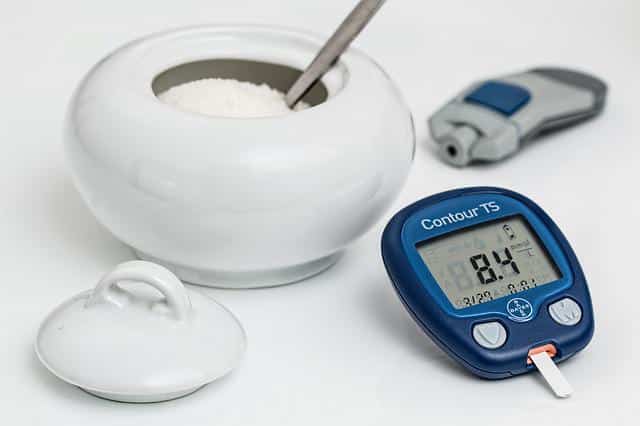How to understand blood glucose levels if you have diabetes
If you have diabetes, it is important to understand blood glucose levels. This guide will help you do just that. We will discuss what blood glucose levels are, how to measure them, and what to do if they are too high or too low. Knowledge is power when it comes to diabetes, so make sure you read this guide and learn all you can about blood sugar levels!
The best way to manage your blood sugar is through regular testing. Your doctor will recommend a range for you, but it’s important that this number always stays within the limits of what he/she recommends because any outside interference can cause serious problems such as heart disease or stroke!
Glucose levels are important for the body to stay in a healthy range. If they get too low, we can lose our ability to think and function normally; but if glucose is high enough that it stays this way over time – there could be serious complications or damage later on down the line!
Monitoring your blood sugar levels is essential to managing diabetes. That’s why we offer a range of logs and supplies so you can record the data easily, including one for pocket-sized printable Blood Glucose Logs and larger blood glucose Logs available at any time from our online store!
Who should check?
If you are diabetic and struggle with managing your condition, talk to a doctor about whether regular checking of blood glucose levels could help. Those who may benefit from such checks include:
- taking insulin.
- who are pregnant.
- have diabetes that isn’t well controlled.
- experience hypoglycemia (low blood sugar), particularly if it happens often or is severe.
- have diabetes and other medical condition, such as heart disease.
- having low blood sugar levels.
How do I check?
The act of poking one’s fingertips to check blood sugar levels has been a common practice since early times. However, with the development and improvement in technology by companies such as LifeScan Inc., people are able to monitor their glucose levels more accurately than ever before through either a Read on your meter or continuous monitoring systems (CMS). To find out everything there is about CMSs start talking win doctor!
What blood glucose levels are and what they mean
The first step to managing diabetes is understanding what blood glucose levels are and what they mean. Blood sugar, or glucose, is the main type of sugar found in your blood. It comes from the food you eat and is your body’s main source of energy. Your blood sugar levels can change throughout the day, depending on what you have eaten and how active you have been.
How to use a blood glucose meter:
If you have diabetes, you will need to check your blood sugar levels regularly. This is done with a blood glucose monitor. A blood glucose meter is a small, portable machine that measures the amount of sugar in your blood.
To use a blood glucose meter, you will need:
- A finger-pricking device
- Lancets
- Test strips
- A control solution
You will also need to calibrate your meter with a control solution before you use it. This is done to ensure that the meter is reading your blood sugar control levels accurately.
To check your blood sugar levels:
- Wash your hands with soap and water.
- Use the finger-pricking device to prick your finger.
- Collect a drop of blood on the blood test strip.
- Insert the test strip into the meter.
- The meter will then give you a reading of your blood sugar level.
Normal blood sugar levels
For most people, normal blood sugar levels are:
Before meals: 70 to 130 mg/dL
After meals: less than 180 mg/dL
If your blood sugar levels are higher than normal, it means you have diabetes.
There are two main types of diabetes:
Type I diabetes: This type of diabetes occurs when your body does not produce insulin. Insulin is a hormone that helps to control high blood sugar levels.
Type II diabetes: This type of diabetes occurs when your body does not produce enough insulin or when your cells do not respond properly to insulin.
What do my results mean?
When you finish checking your blood sugar, make sure to write down what factors may have affected it. If the same thing keeps happening and is affecting levels at about similar times each day then consider changing how we care for diabetes in order to prevent further problems!
The goal is for you and your doctor or diabetes educator to learn what these numbers mean in order to make adjustments so that everything’s working well. It can take some time before we get it just right, but don’t forget: always ask if there are any jumps out of range when calling!
Keep in mind that blood glucose levels can make you feel bad. When your numbers are high, it’s easy for them to trigger feelings of anger or confusion about what is happening with diabetes treatment- so don’t judge yourself based on these readings! It may be helpful though – especially if the number was low but now seems higher than expected-to check out some resources online where people share ideas on how best to handle different situations.
Tips for keeping your blood sugar levels under control
There are a few things that you can do to help keep your blood sugar levels under control.
- Eat healthy foods. Choose foods that are low in fat and sugar. Eat plenty of fruits, vegetables, and whole grains.
- Get regular exercise. Exercise can help your body use insulin more effectively.
- Take diabetes medications as prescribed.
- Check your blood sugar levels regularly. This will help you know if your diabetes is under control.
- Talk to your health care team about your diabetes. They can help you create a plan for managing your diabetes.
By following these tips, you can help keep your blood sugar levels under control and live a healthy life with diabetes.
Conclusion:
So, what do all of these numbers mean? What is a good blood glucose level to aim for? If you have diabetes, it’s important to understand how to read your blood glucose levels and what they mean. Work with your health care team to create a plan that will help you keep your blood sugar within the target range. And remember, if you ever have any questions or concerns about your blood sugar levels, don’t hesitate to reach out to your doctor or nurse.

